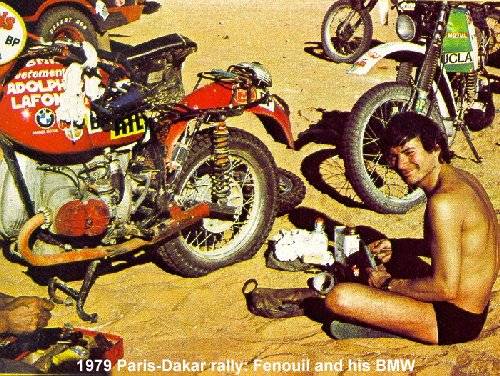




The first running of the Paris-Dakar Rally ends with Cyril Neveu winning the motorcycle category on a Yamaha 500XT.
The dream of the 'Ultimate Rally' actually began back in 1977, when the French motorcyclist Thierry Sabine got lost on his bike in the Libyan desert during the Abidjan-Nice Rally. Sabine returned to France still in thrall to this landscape. He then plotted a route starting in Europe, continuing to Algiers and crossing Agadez before eventually finishing at Dakar, Senegal. Sabine coined a motto for his inspiration: "A challenge for those who go. A dream for those who stay behind." Courtesy of his great conviction and that modicum of madness peculiar to all great ideas, the plan quickly became a reality.
Thierry Sabine's dream took shape on December 26, 1978, as 182 vehicles (80 cars, 90 motorcycles and 12 trucks) turned up in the Place du Trocadéro for a 10,000-kilometre (6,214-mile) journey into the unknown, destination Dakar. The encounter between two worlds sought by the event's founder unfolded on the African continent. Among the 74 trail-blazers who made it to the Senegalese capital, Cyril Neveu, at the helm of a Yamaha 500XT, would be the first winner of what would go on to be called 'the greatest rally in the world'.
Did you know that in 1979 all the vehicles that took part were classified together, although they would compete separately in subsequent editions of the race and that Cyril Neveu won the rally despite not winning any individual stages, taking the lead on the sixth stage after Patrick Schaal (Yamaha) fell and fractured his little pinky-finger. Betcha he took a lot of shit for that one.
Today in motorcycle history proudly supports the National Association for Bikers with a Disability (NABD). www.nabd.org.uk

















